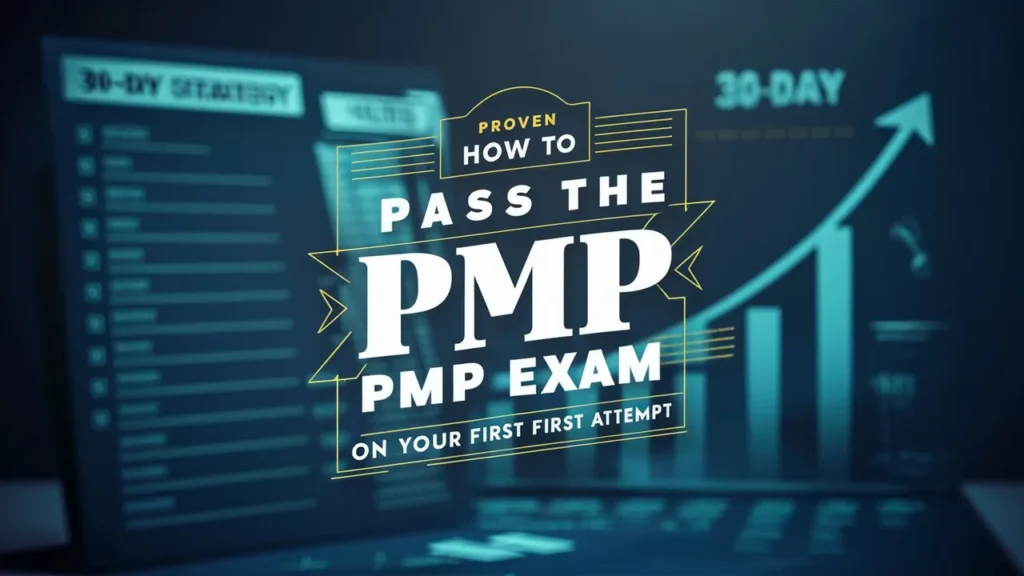Introduction
If you’re a project management pro with 8-30 years of experience, you’ve likely navigated complex projects—some predictive, some chaotic. As you gear up for the Project Management Professional (PMP) certification, here’s a wake-up call: 70% of PMP aspirants fail their first attempt, often stumbling over agile and hybrid approaches. Since 2021, these methodologies dominate 50% of the PMP exam, reflecting their rise—70% of projects now use agile or hybrid methods (PMI Pulse 2023).
Mastering how to master agile & hybrid approaches for the PMP exam isn’t just about passing—it’s about aligning your expertise with PMI’s adaptive lens. This blog dives deep into agile (Scrum, Kanban) and hybrid (blending predictive and agile), offering strategies to conquer this exam chunk. Quick Tip: Start with PMI’s Agile Practice Guide—it’s your agile lifeline. Let’s get you exam-ready.
Why Agile & Hybrid Matter for the PMP
The Exam Shift
Industry Relevance
Your Experience Edge
With 8-30 years, you’ve likely touched agile (e.g., team iterations) or hybrid (e.g., fixed-budget sprints) informally. This guide bridges that to PMI’s lens—e.g., “Your stand-ups are Scrum events.” Leverage your past to ace these questions.
Case Study: John, a 20-year PM, failed in 2020—pre-agile shift. Post-2021, he mastered Scrum and passed, tying his team huddles to PMI’s framework.
Understanding Agile Basics
Core Principles and Frameworks
Scrum Deep Dive
Key ElementsFaqs:
What It Is: A visual, flow-based method—uses boards (To Do, In Progress, Done) to limit work-in-progress (WIP).
Key Tasks: Pull tasks as capacity allows—e.g., “Finish design, then start coding.”
Your Link: Managed a task board? That’s Kanban in action.
Exam Tip: Grasp WIP limits—e.g., “Why cap tasks at 5?”—it’s a common question.
Example: Lisa, a 15-year PM, tied her Kanban board to PMI’s “Manage Project Work” process—nailing an exam hybrid scenario.
Kanban Essentials
What It Is: A visual, flow-based method—uses boards (To Do, In Progress, Done) to limit work-in-progress (WIP).
Key Tasks: Pull tasks as capacity allows—e.g., “Finish design, then start coding.”
Your Link: Managed a task board? That’s Kanban in action.
Exam Tip: Grasp WIP limits—e.g., “Why cap tasks at 5?”—it’s a common question.
Example: Lisa, a 15-year PM, tied her Kanban board to PMI’s “Manage Project Work” process—nailing an exam hybrid scenario.
Mastering Hybrid Approaches
What is Hybrid?
Blending Predictive and Agile
- Predictive Base: Define scope, budget upfront—e.g., “$2M, 6 months.”
- Agile Layers: Iterate deliverables—e.g., “Sprint 1: prototype.”
- Key Shift: Plan rigidly, execute adaptively—e.g., fixed milestones, flexible tasks.
Your Fit: Ever adjusted a Gantt chart mid-project? That’s hybrid thinking.
Hybrid in Practice
- Example: A construction project—fixed budget/schedule (predictive), iterative design tweaks (agile).
- Process Link: Ties to Planning (WBS) and Executing (team iterations).
Exam Tip: Spot hybrid cues—e.g., “Fixed scope, but team sprints—what’s next?”
Success Story: Raj, a 25-year PM, passed by mapping a hybrid $5M rollout—predictive budget, agile software phases—to PMI’s matrix.
PMP Exam Strategies for Agile & Hybrid
Key Concepts to Know
- Agile Terms: Backlog, velocity, burndown charts—e.g., “Velocity dropped—why?”
- Hybrid Nuances: When to pivot—e.g., “Scope’s fixed, but delays hit—adapt how?”
- PMI Lens: Agile fits all 5 Process Groups—e.g., “Sprint Planning” is Planning.
PMP exam agile questions blend theory and scenarios—know both.
Practice with Scenarios
- Sample: “A sponsor demands faster delivery on a fixed-budget project—hybrid or agile?” (Answer: Hybrid—blend fixed scope with sprints.)
- Method: Use PMI Simulator—7-10 mocks, 75-80% goal. Review agile errors—e.g., “Missed Kanban WIP.”
Your Edge: Tie scenarios to past pivots—e.g., “I sped up that phase—agile move.”
Study Plan and Resources
- Plan: 120 hours—40% agile/hybrid (Scrum, Kanban, hybrid cases), 30% mocks, 30% PMBOK 7 (agile ties).
- Resources:
- Agile Practice Guide: PMI’s agile bible—read it twice.
- Rita Mulcahy’s PMP Prep: Strong on hybrid scenarios.
- PrepCast Simulator: Agile-heavy mocks.
- Group: Debate hybrids—e.g., “Scrum in a fixed plan—how?”
Case Study: Sarah, a 12-year PM, aced agile questions with 50 hours on Scrum and 5 hybrid mocks—scoring 82%.
Conclusion
How to master agile & hybrid approaches for the PMP exam is your key to conquering 50% of the test. Agile (Scrum, Kanban) and hybrid (predictive-agile blends) aren’t just trends—they’re your exam lifeline, rooted in your career wins. Start now: grab the Agile Practice Guide, map your projects to PMI’s lens, and drill scenarios. With 8-30 years, you’ve got the edge—turn it into a PMP win. Your certification’s waiting—go seize it!

